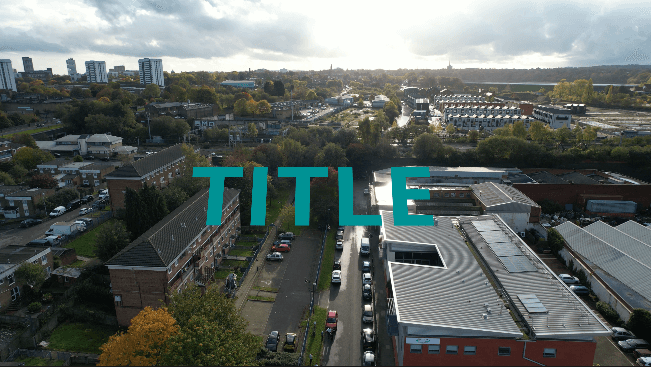Rough Cut
Final Edit
Pre-Production
In hindsight, our pre-production holds up very well. The only changes that would need to be made involve the name of the documentary, which is now “Working Title” and removing the public filming permits, as they are no longer applicable.
Pitch
We filmed our pitch in the form of what is, essentially, its own documentary. We took a lot of creative liberties, and experimented with many different storytelling techniques to keep the narrative of our pitch dynamic.
O Resumo
The purpose of this project is to create an informative documentary based off of issues faced by British teenagers in the modern age. For our brief, our documentary is to be about 15-minutes minimum. We have decided to make ours about youth getting into the creative industries, involving the stigma of these careers being unstable, hard to get into, or not in demand. We feature interviews from other students within our school who have taken that leap, in a bid to encourage other people to consider other options outside of traditional work.
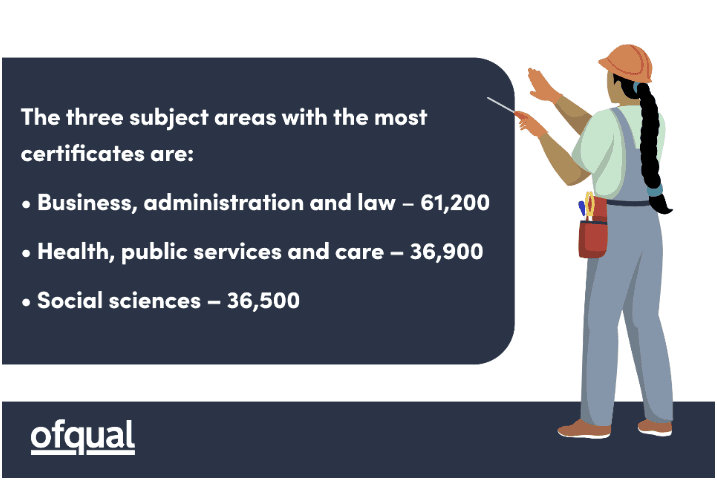
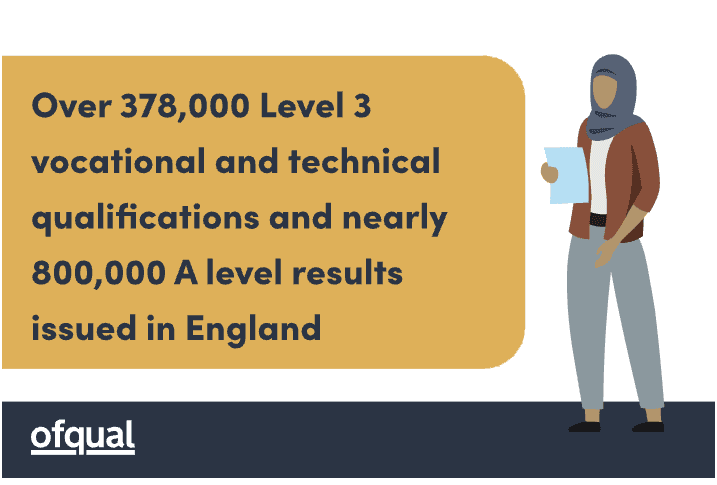
These are some statistics about the qualifications that 16-18 year olds in the UK take. A large majority of them take more quantitative subjects, such as business and health. Furthermore, there's a majority of students taking up A-Level subjects as opposed to vocational ones like the BTEC that we are undertaking right now. Now, while this report doesn’t touch upon creative subjects specifically, A-Levels are known for their academic rigour, and thus lack of individual creativity compared to creative qualifications themselves.
Those three subject areas are known for the general public reputation and perception of income, which makes it harder for young people to discover creative subjects that may have more favourable working conditions. The documentary aims to show that the creative subjects will, while still very much their own careers, entails similar challenges, but with creative freedom that does not hinge off the consequences of an individual’s health or a company’s finances.
O Resumo
The client is Channel 4. The brief is to create a documentary suitable for their channel that addresses youth problems and to do so with creative content creation techniques and diverse perspectives. Leaving the brief less open-ended requires us to do work to research into other subjects that we would not otherwise consider. This is an ethos that Channel 4 documentaries stick to as well, thus this is great experience for us to delve into.
Channel 4 is well reputed for the diversity of their content, given a need for fresh perspectives as they are publicly funded. One of the genres that they excel in is documentary. Whether it be science, food, and everything else, these are the staples of their broadcasting, with these documentaries especially catering to young adults. This means our documentary would fit in quite well within their lineup, as it covers a niche topic or, rather, a subject that isn’t fully concerned or talked about by the general public. And, with that young adult focus, it means that our doc would be reaching the right people.
O Resumo
This is geared mainly towards youth, especially 14-16 year old British teens. This is because we aim to encourage people to get into the creative industries sooner, such as through higher education, degree apprenticeships, or work. This pertains to teens of any gender and income, to make these industries more accessible. It’s towards young people whose attitudes are knowledgeable on content creation culture, but are curious as to how to make it an actual living. The documentary may also be beneficial to the family of said teenager, who do not know much about the creative industries save the products made my larger and already well-established entities.
There’s an increasing need for this audience to get into the industry sooner. With gaps in demand in traditional broadcast and increasing desire for content by streaming services they watch like Netflix, and even the surge of jobs that wouldn’t have existed a few decades ago, there’s no doubt that creatives are needed. Streaming services see millions of subscribers using their services, such as young teens. Outside of this bubble, exposure to creative qualifications, especially vocational ones is limited, and makes creative industries appear as some sort of ‘exclusive’ club that requires having existing connections.
The documentary shows that it absolutely is possible to make those connections, in a controlled environment surrounded by like-minded people. It’s not a matter of age, it’s merely about finding the people and places that can help to train and cultivate their skills. Everyone in the documentary would be able to relate with this stigma, and they are proof that it is certainly not the case that you can’t start being professionally creative from a young age.
O Resumo
Creative industries such as film see mainly older people working in them, and an employment drive reaching out to younger people is definitely able to bring more diverse perspectives to the world of work. It also acts as an informative piece for older people, and perhaps even younger people who want to discover the various careers they could be interested in.
The great thing about these industries is that they allow self expression through various forms of media. This is able to perfectly represent different cultures, genders and sexualities, which is what makes it so appealing to people like us. We want to show the endless possibilities it can open up, while still very much humanising what the jobs and creation process are like.
Our intended contributors are all creative youth, yet they all specialise in different creative fields. One is an actor, one works in costume and makeup, one works in filmmaking for commercial purposes, one works in technical production, and one works in production arts.
Each contributor touches on their own unique experiences within their specialities, and all touch on the benefits in terms of connections and facilities provided, both by the school and the people around them. Some had previously considered traditional industries, and some even switched from other creative or arts pathways. Every audience member’s situation and attitudes towards creative industries would be unique, so we hoped to represent that through the contributors as well. That’s how our message would properly come across.
O Resumo
Our initial idea was to shine light on the stigma that we saw against people in the creative industries. Whether this be pressure by parents, or uncertainty around the stability, we thought it would make for a good topic to cover. However, after a meeting consolidating all of these ideas, we realised that we should aim to promote the positive sides of these industries more. Thus, we pivoted the idea to gear more towards the realistic but rewarding side of things, to make it more attractive to encourage more personalities.
It still relates to the purpose of the project, as we comment on the lack of career aspiration diversity among young people. We offer a solution to the problem through this documentary, and more than one solution to this at that. It also still pertains to the audience, but emphasises things in a more positive light.
The creative industries will also have their own cons, however these challenges aren’t unique to any other job. At the end of the day, the creative industries aren’t on the frontline saving lines, however they do push a lot of money and require similar structural arrangements as other large companies. So, talking about the negatives would almost dissuade the audience and completely go against our message. In a way, it would be like us stigmatising ourselves. It provides a clear stance on our passion and its possibilities in creating fulfilling demand for careers and talent, and perhaps with less dire consequences if things weren’t to go favourably.
O Resumo
Most of these examples are actually YouTube videos. YouTube creators have been at the forefront of pioneering how documentaries and stories are told, and bringing this novel method of storytelling would be able to elevate our documentary even further.
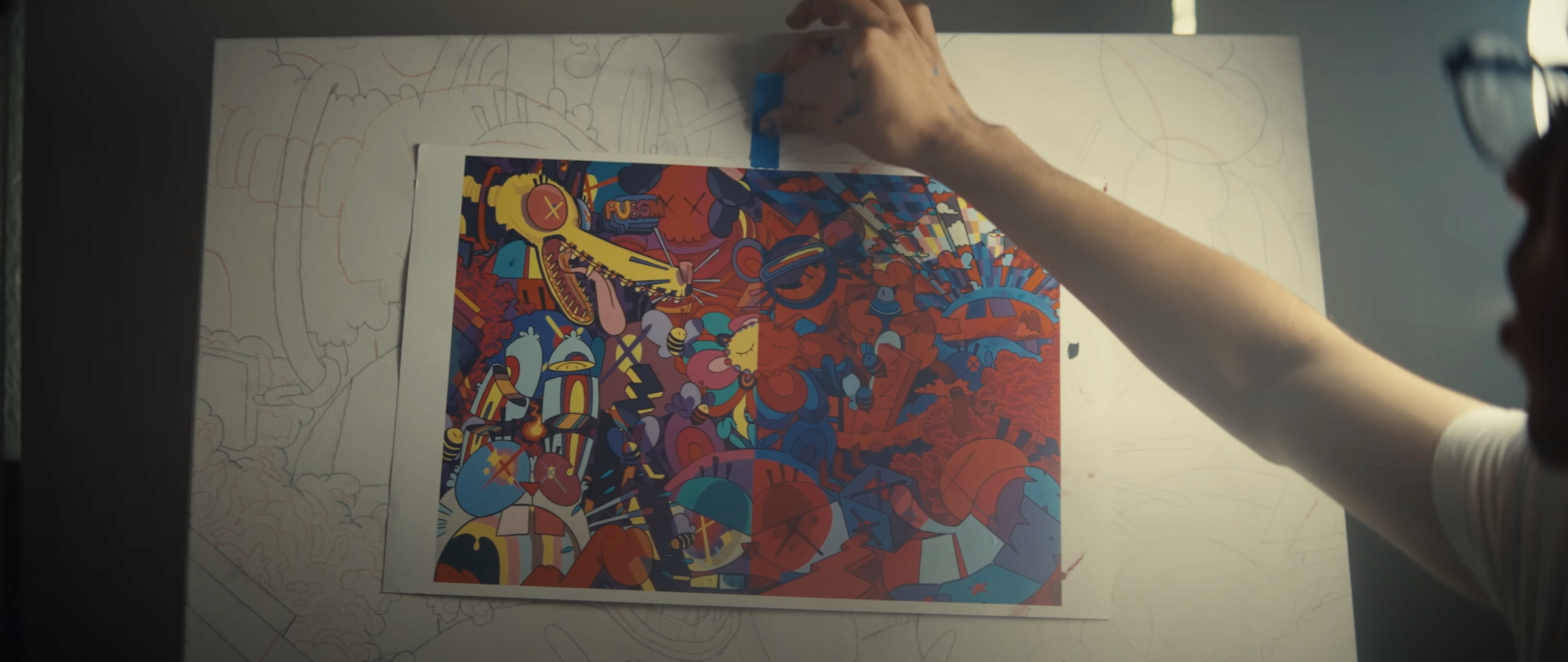
One example is Gawx Art (shown above). With 2m subscribers on Youtube, he is one of the top-performing art channels on the platform. Through emphasis on planning and the post-production process, he is able to make something otherwise static and laborious into a short film.
His hand-picked music aids this greatly, providing structure and emotion to the various montages within his videos. He follows the “Pope in the Pool” principle, in which giving information is displayed through entertaining visuals. Through this use of fun filming and editing techniques, as well as appropriate indie music with a novel sound that drives the cuts, it is a perfect example of how we should be presenting informative content in order to keep retainment high for the audience.
So, to put this into practice, we’ve put our own efforts into music curation, since one of our people in our doc team is an up-and-coming artist. Key pieces of music, such as the intro and the host’s talking heads, are made using this music, meaning we’re able to capture the right mood for the moment, whether it be epic or pensive.
In almost all cases, Gawx is the only personality in his videos. As such,. for ours, we wanted our host to also be able to have his talking heads, but from different angles and in different settings to keep things fresh, alongside that curated music. We’ve got scenes of him sitting on a canteen chair, spinning chair, sofa, and even walking on the road with a drone filming from above. We didn’t want to necessarily justify the reasons for each location, however it goes along with that “Pope in the Pool” principle, and a cool shot will always make any exposition that bit more interesting.
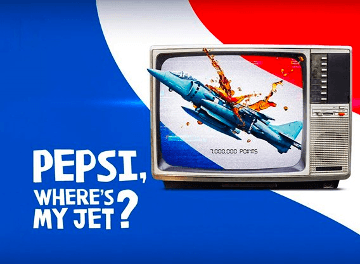
As already listed above, “Pepsi, Where’s My Jet?” is a Netflix documentary revolving around a young adult who finds a loophole in a Pepsi promotional campaign that leads down to a path of legal action. While on the surface level the premise and outcome are rather simple, the documentary uses engaging visuals to keep viewers hooked.
It’s very stylised, with graphics reminiscent to the visual style prominent in the 1990s, of which the documentary is based from. I hope to use this to inspire the visual style of our own documentary, using our collective visual styles to make this documentary unique and give it a unique flavour to set it apart from the traditional documentaries you would see on TV. Documentaries on Netflix place a heavier emphasis on retention, so taking these elements would benefit our own product.
In this vein of creating fun visuals, I was hoping to do something similar for the credits. After all, I see credits as one of the most neglected elements of a piece of media. It’s the part the audience usually skips to their next binge, and where not enough time is given to highlight the work of small crews and contributors. So, while rolling credits will still feature, I’m hoping for there to be some stunning drone footage, with text that has been tracked to the footage so it moves in real time. It will also feature fun backgrounds and text effects for each member of the crew, and a dedicated section for the contributors featuring their images.
Alongside this, while PWMJ had these people go out of their way and jumping through many legal loopholes, they are still normal people at the end of the day. We wanted to humanise our own contributors, to ensure the doc stayed relatable and that the audience would see them practice what they preach. As such, we filmed tours with some of the contributors, giving a little insight as to what they do on the daily basis with the video evidence to show that. It says to the audience that yes, it’s the proof in the pudding that there is creative work to be done.
O Resumo
When we made the pitch, we wanted to use it as a playground to experiment with the different filming and editing techniques that we would use in the eventual documentary. While this pitch was based off of the original idea, I find that the styles are still transferrable with our new idea. People we showed, including teachers and students, commented on the engagement throughout, and the creative flairs such as the graphics and credits.
We found ways to weave upbeat humour into the script, so there wouldn’t be a dull information-clogged moment. I also created various cutaway graphics to keep the flow of the narrative. Our fun idea for the credits wrapped up the pitch very well, and was a way for us to display our skills without the need for any talking. The strength is that we were able to cover essentially everything required in the brief, in a package that makes it more a piece of entertainment as opposed to a briefing.
Our inspirations for the doc are similar to the ones for the pitch. An info dump would not make for an engaging pitch. We combed through the criteria we had to cover, ensuring we hit all the points, then wrote a rough script and incorporating some pieces of humour. The humour would either be wordplay, or added through editing with effects and timing of cuts.
It also would not be sprinkled in randomly at any point. Sections such as inspirations were kept mature and more serious. This is what makes the humour more effective; adding it at the points that call for it. The creative industries aren’t all cut-and-dry, and there’ll always be space to put in extra creative efforts just for the sake of it. That’s why these industries exist in the first place.
There may have been sometimes where this humour was a bit overbearing or unnecessary. Our team is aware of the requirement of the documentary working in a professional context, so there won’t be as many intended moments for comedy in the final product. The intro doesn’t exactly make too much sense in hindsight; we will work to make this more essential and informative.
We will be using both our own feedback and others’ to strike the correct balance between entertainment and how informative the product is. Since we already have samples of professional footage from filming, we will be able to shape this to do justice to our contributors.
O Resumo
With an intended client being Channel 4, a more modern channel with a younger audience, it would work as a good terrestrial platform to show our documentary. While it’s all well and done to create our own documentary, it’s key that the topics mentioned aren’t overdone, and rather to show a new side to things and the roots of the solutions to the problems of youth creativity posed by other works. It was one of our ideas originally to touch upon the difficulties of aiming to get into the industries in the first place.
However, we abandoned this idea as we wanted to shed a positive light on working on this. When covering a topic that is somewhat shrouded in apprehension, a documentary should aim to clear all of this up and to persuade potential creatives to actually take the initiative. This was the main essence of what we actually wanted to do for our documentary, expanding our initial idea from focusing on BOA itself, to teaching lessons for a wider audience, regardless of if people get into it through education or not.
Channel 4 is well reputed for the diversity of their content, given a need for fresh perspectives as they are publicly funded. One of the genres that they excel in is documentary. Whether it be science, food, and everything else, these are the staples of their broadcasting, with these documentaries especially catering to young adults. This means our documentary would fit in quite well within their lineup, as it covers a niche topic or, rather, a subject that isn’t fully concerned or talked about by the general public. And, with that young adult focus, it means that our doc would be reaching the right people. Considering that broadcasters like the BBC run off of the TV license fee require more stable programming, Channel 4 can act more as a playground or casual place to try out new types of content, with documentaries being one of their main specialties.
O Resumo
We’d already done multiple creative experiments and test in our initial pitch that we did for the documentary. With 18 minutes to work with, we had lots of opportunity to test out every step of the creation process. We were able to get handheld shots, talking head shots, and other experimental shots that wouldn’t otherwise be shown in a typical documentary.
I was able to experiment with aspect ratios, music, and ways of presenting information. I learnt of the ‘Pope in the Pool’ concept, in which information should be displayed in a fun way, regardless of its association with the topic itself. For example, when talking about demographics and psychographics, I edited it like an inflight safety video. This makes the information more digestible, which we hope also passes onto the audience in the form of additional engagement.
Expanding on the editing, Ethan and I learnt more about DaVinci Resolve, and the various ways that the Fusion nodes in the software can create additional animated effects. In this instance, we used alpha channels and contrast backgrounds to create a rotoscoped credits scene of the cast dancing, similar to old iPod ads.
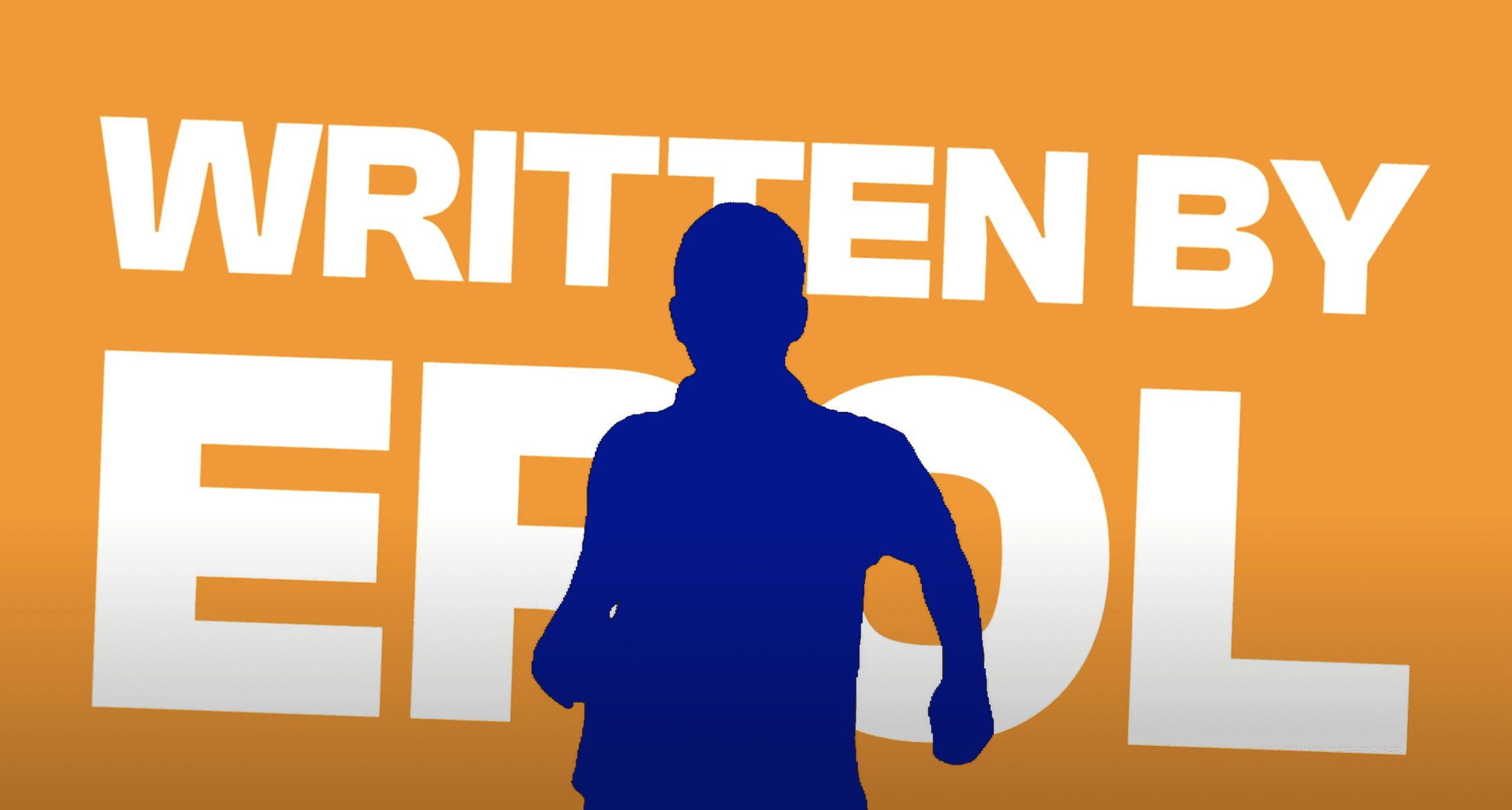
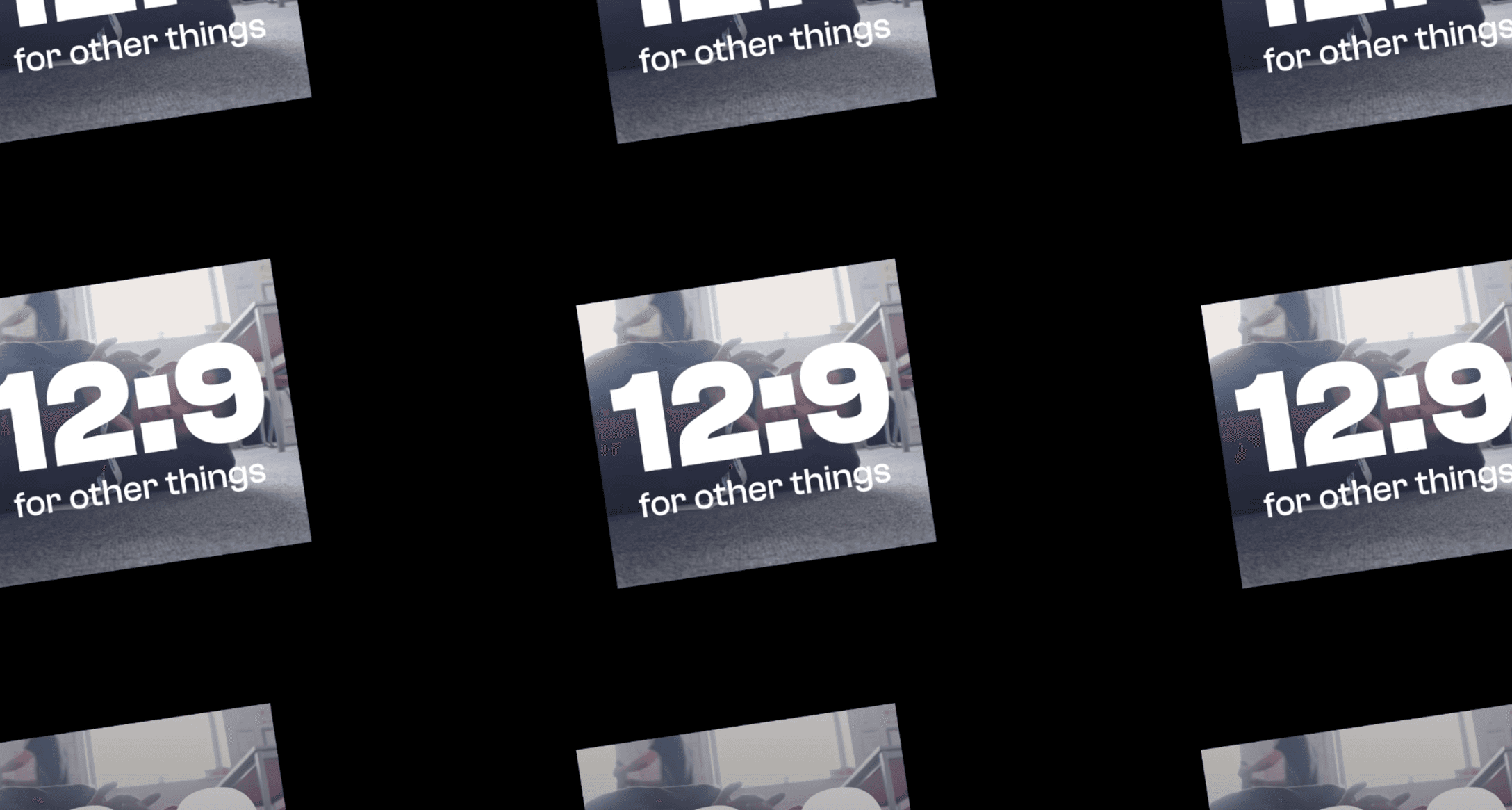
It would be a bit harder to incorporate some of the other effects, like the zoom effects in the ‘Aspect Ratio’ section, without it looking to janky, so this is something to refine further to make it look more professional with less ‘edge’.
All in all, we’d got down what we hoped to achieve camera-wise and, with some additional equipment later down the line, we were able to get our lighting just right, using multiple rigs and negative fill. Through the drafts, you can see that it enhanced the image greatly, and looks very professional, ideal for the sorts of clients we have in mind.
Adding on to my point about the ‘Pope in the Pool’, having variety in the way information is presented prevents people from disengaging. So, while I mentioned that I had edited the footage to achieve this effect, we had already committed to filming this idea from the get go, meaning we would be able to execute it in a more natural way. Channel 4 acts as a creative playground for this sort of media, so showing that young people are willing to take creative freedoms while still being informative was a key goal of ours to ensure this pitch would give the documentary the raison d’etre it deserves.
O Resumo
A problem we encountered involved time management. Given we were already working on various other school and work projects at the same time as the documentary, it meant we couldn’t get as many interviews with people outside of our school. Unfortunately, this means we can’t get perspectives from more experienced adults in the industry, and their own opinions on young people working towards entering them. While it’s something we can’t arrange for before the deadline, it’s something to consider if we ever wanted to expand on this foundation that we hope to build.
If anything, it showed me the wide range of talent we already have in the building. With so many of them, and with how much they do for their pathways, we were still able to get enough footage for our documentary, and I’d say that the majority of the impact we hoped to convey has come through them.
For future projects, as BOA is well connected within the creative stage and screen industries, they would be able to link us up with professionals from each of these sectors, in line with the breadth of subjects covered by the students that we interviewed. If we were able to go with our original plan which was to integrate one professional alongside a student subject-wise, we would’ve been able to back up what our student contributors have said with professional opinion, which perhaps would’ve given the documentary that bigger push in the positive change that these jobs provide, both for the industries and the person. However, as mentioned, time constraints are ultimately what prevented us from doing so.
As we had such short time for the ambitious ideas we had for the project, we planned out extensively what equipment was needed for shoots. This included lights, cameras, batteries, and other camera equipment that would give us that professional look. With the decision to base our interviews in the school itself, it meant that, if we needed any additional equipment or battery changes, they would only be one floor away.
This meant that we could prevent any further losses of time during the filming process, which allowed our student contributors to stay focused and so that we would not disturb them while they were doing their line of work.
Another example of a risk was flying drones for certain shots with legal consequences. Fortunately, both our drone pilots already had their drone flying IDs, with them being printed on each of the two drones. This gave us flying and filming clearance, but also demonstrated their expertise in handling this equipment, in which we only had to worry about how the shot would work instead of if we were flying into any obstacles.
O Resumo
Having shown the first draft to a couple of my classmates, the verdict is that it is overall positive. While the first draft wasn’t a finished product, the sections shown (the intro, touching on the stigma, and parts of the job tour) had no notes, besides colour correction tweaks that had already been planned in time for the final product.
The key strength was that it was edited akin to those of professional documentary makers. One that was mentioned in conversation was Johnny Harris. Being a former Vox creator, he is an online journalist, with his main online platform being his video essays on YouTube. This Vox-style editing has also been present on Netflix., as Vox themselves have also made documentaries for them. As they were an inspiration in my editing direction, I’m glad that we were able to mimic a style that’s been tried and true for engagement, while also adding our own flavour through music choices and graphics.
As I was editing, I was more focused on the graphics I could add, as well as when to cut between each camera while matching any music beats. Colour correction is not one of my specialities. Considering that we were using different cameras for some multicam setups, this meant that the colour grading profiles wouldn’t be the exact same between them, and manual adjustments would have to be made to maintain consistency. Getting feedback from others meant I knew the tweaks I needed to make to colour correction, and what to bring up with the camera operators as they know their cameras inside out.
In this case, I felt iterative feedback processes would see diminishing returns, especially when the initial product was already so good and not a lot is changed between versions. In fact, most of the finishing touches I did of my own volition, just because I thought it would make it look cooler. Subsequently, feedback from peers would also state it was a good creative decision to do so.
O Resumo
We really got into our groove as we did more shoots. Lighting was set up much faster; camera settings were nailed; and interviews were started and completed much faster. If we were to shoot the documentary again, it would be nice to create our own sets or to use lightsabers to add some more depth in the background. It makes the scene look more full, and also would give more personality to the contributor. One way we could have done this was to do all of their interviews in their environment, such as doing Oliver’s in front of the sets and props his department have made.
It also would’ve been good if we could use a different audio setup. Since shooting, I have obtained a DJI Mic, which has vastly better function and audio quality, inside and outside, than the one that was used initially. This would solve the issues that we’ve had with the audio, such as having to setup a chunkier receiver, do away with the lav mics, and prevent audio from peaking in all situations by using -6dB safety tracks. We saw this audio peaking issue being most prominent when filming outside alongside our drones. The host Leorge spoke a bit louder to compensate for the whirring of the drones, however this affected the audio quality badly, and DaVinci Resolve’s built-in voice isolation feature didn’t really do it too many favours.
This in-depth consideration of our setup still goes in line with the professionalism that we intend to get from this piece of media. Sure, it could count as a casual student production, but curating a setup means it has that distinguishable clean and professional look you see in high-end TV documentaries. Having both video and sound that look and sound similar to those of the documentaries means that the audience can actually focus on who the subjects are and what they’re saying. Having great visual quality prevents distractions from anything besides that.
As previously mentioned, our sound system could definitely be improved for our handheld shots. We have since gotten an upgraded version of DJI Mic. This has 32-bit float, with a higher bandwidth for audio data meaning that the mic would not peak during the conditions we were filming in, compared to our previous gen equipment.
To add a bit more personality to shots, we could have used a slider to create nice visual introduction shots for our subjects. We could have also added a gimbal to replace any handheld movements, which would make the image feel a lot smooth and makes cutting between that and any drone footage less jarring.
In regards to lighting, while we had a great foundation for a lighting setup, we could have used visible coloured LED lights in the background to add a splash of colour and some degree of separation between the subject in the background. In a similar vein, dressing our sets would give the shots further personality, making it look even more visually high quality.
O Resumo
When looking through the rushes and all of the footage, alongside our development of the speed with which we can setup our equipment, that high level of technical quality has remained mostly consistent. This is especially true for the overall look, with consistent camera quality, and consistent consideration of lighting situations. You can see below how we were able to maintain this quality across both Carlo and Oliver’s interviews. They both took place in the same setting, however were both filmed on different days, of which the equipment had to be set up again.
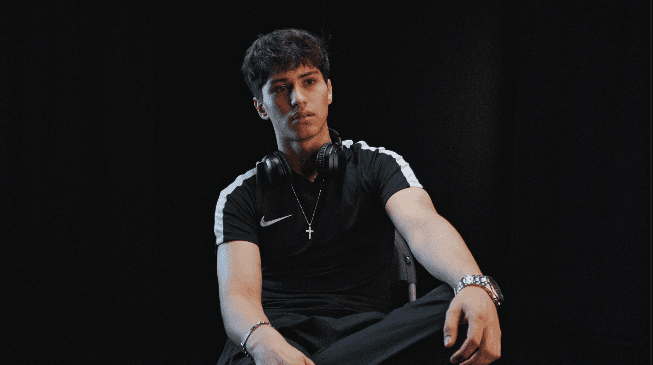
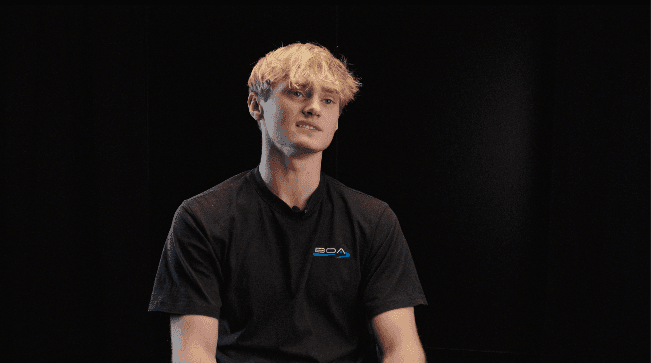
As mentioned earlier, it was harder to maintain that same quality with the audio. Perhaps it wasn’t the best quality it could’ve been, however there are not too many drastic changes in audio quality across all footage. In post, we’ve managed this with adding DaVinci Resolve’s Voice Isolation to ensure that the voice is the only in-camera audio that is front and centre. Audio levels will also be monitored and tweaked, both with on-set footage and additional audio, like music and sound effects.
The approach we had with our camera setup meant we would stay in line with the expectations that broadcasters like Channel 4 would have to ensure consistency in visual quality with the rest of their catalogue. With cutaway shots consisting of the same colour profile and depth of field, even across different cameras, it enables us to make those creative cuts and graphics without it being too jarring and shifting in quality.
Not only is it important to keep it consistent in quality as ofter documentaries in general, but when pitching a pilot, it will make it easier for commissioners to gauge the quality of the subject of the documentary itself, rather than nitpicking visual decisions that take away from that story. This further clarity leads to that increased possibility of getting commissioned, especially with backgrounds such as young adult filmmakers posing a bit more of a challenge when it comes to pitching compared to veteran documentarians.
O Resumo
I learnt more about how the camera, lighting, and audio setup worked as we filmed more. Since my specialism is mostly in the production process, it had been a while since I had actually set up professional recording equipment. It gave me a refresher on setting up the lens and the tripod. I also feel that, with the DJI Mic I have gained since then, I could even set up wireless audio too.
The technical skill I learnt more is editing. There have been many more effects on hand in DaVinci Resolve that I’ve discovered compared to the last time I worked on a long-form project. As making a documentary is a new draft, and thus project, that I’ve worked on. I’m learning about new plugins and, after some creative thinking, have found potential to use some others to really make the documentary pop, such as tracked 3D text in the credits.
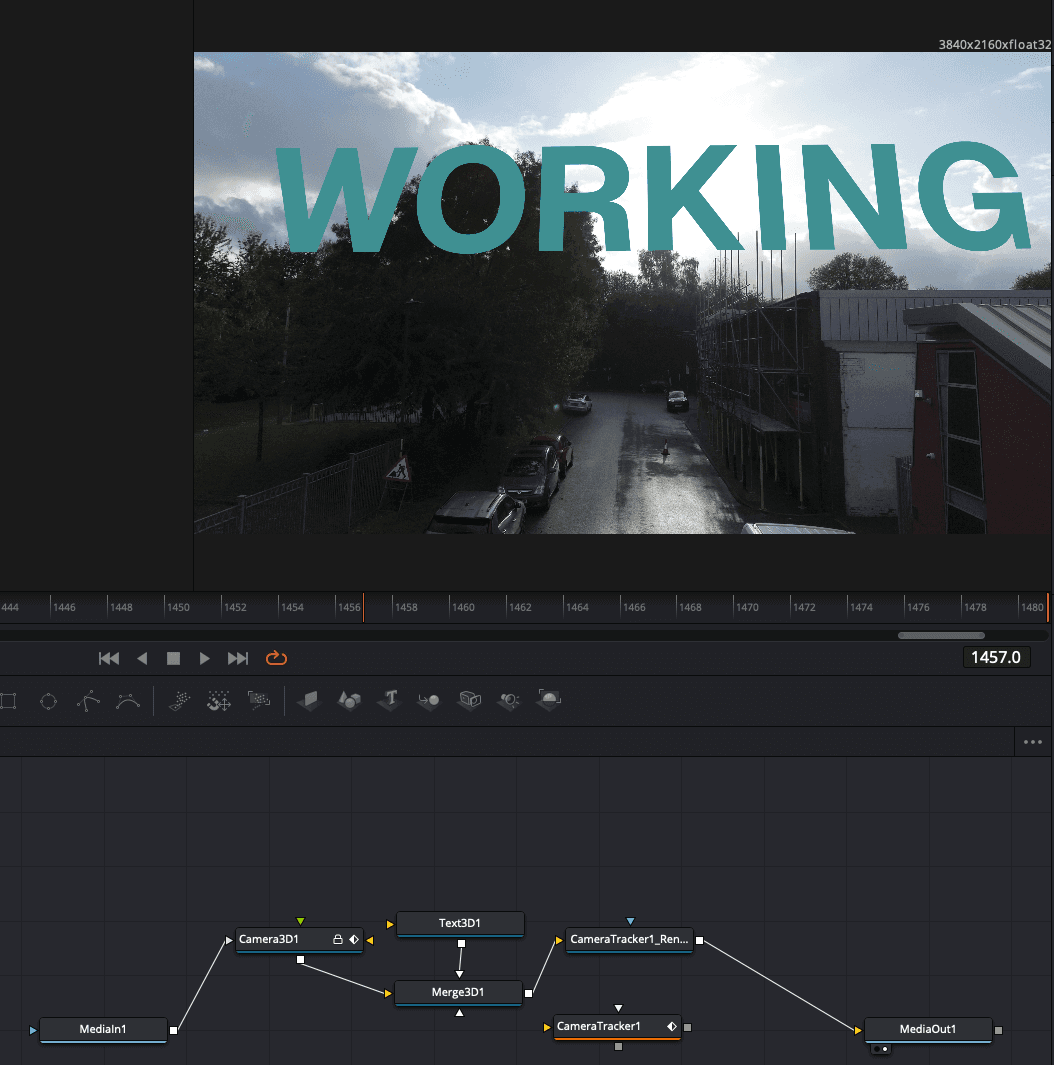
The technical aspects that have posed somewhat challenging is the processing demand for these effects. Even with a good computer, they do a number to the computing power, and so it’s hard to preview how the effects look without rendering them first. This can also add up in time, so this is something that I’ll do later down the line just to add some extra details.
These technical skills meant I have been able to step my editing process up from our pitch, and try out some of the graphic ideas that didn’t make the pitch. With a more professional filming process, this knowledge about the setup means that I can cut between multiple perspectives of the same thing to nail certain story beats at times. I aim to keep the engagement fresh for some of the scenes using graphic elements like text, however having a multicam setup means I can continue to do that, but through the simplicity of a cut.
This is what I would do for the individual experiences of our contributors, which double down on the broader concepts that are mentioned by us. It also provides a degree of separation between their interviews and their introspective on their everyday activities, providing a multi-faceted insight between the surface-level casual happenings in their industry as well as the joys and doubts that they express because of it.
O Resumo
Going into this, the camera crew had a very holistic approach in making the documentary look professional. With good lighting and cameras at our disposal, they were able to light the scenes in such a way that it was indifferent from professional documentaries. Interviews had perfect clarity, rule-of-thirds conventions were used and, as a result, made it a lot easier to work and colour with.
They also both had their own DJI drones, which gave us perfect aerial and overhead shots as well. This worked very well for our credits scene, as it really fit in with the theme of “flying”. It makes the credits very rewarding, as the drone flies away from the school into the sky, looking at the sun.
An idea that could’ve been implemented for a shot is to add a slider, with the camera on it as it slides to reveal our subjects, alongside motion-tracked text, in a similar fashion to a typewriter. There’s a lot of static and forward & backward shots, so having some sideways shots adds more nuance to our bank of movement, and can also help in differentiating casual B-roll and the insightful interviews.
For the scenes where Leorge is talking while walking on the road, we could have attached the camera to a gimbal, and got closer to him to accentuate the leading lines and objects as he moves forward. It would mean that cutaways to the drones above him wouldn’t feel too out of ordinary and a general sense of movement and direction is preserved.
O Resumo
Most of the creative audio uses actually came from the post-production process. With access to Artlist, a stock platform with sound effects, stock footage, and music, I was able to utilise a lot of the sound effects and music that other documentaries, such as those on Netflix and YouTube, utilise to create emotion. Instances this has been used include the sounds of a ‘highlighter’ when text is highlighted, as well as a shutter sound when a photo appears on screen.
This is alongside our host’s hobby as an artist, and has been able to make music specifically for the documentary, such as in the intro. It gives us more flexibility, as we can expand beyond the realms of stock music, making music discovery easier as the music is made specifically for the segment. This makes timing easier, and any musical adjustments that need to be made can be done on the fly as opposed to finding the right time to cut and fade two audio clips.
Audio is just as, if not more, important as the visuals, and having both in-house and online licensed music, means that there are less limitations to use good music in our documentary. This really heightens the production quality of the product, and it brings us that step closer to make it more appealing to a professional client.
We used Leorge’s custom made music for our more casual segments, as there was more space for experimentation outside of the interview segments. In combination with licensed music, they set their own moods, casual and introspective respectively. Visual and audio storytelling come hand in hand, and influence each other and how the other is perceived. However, I’d even say that the audio had a lot to play in the edit, as it influenced the amount of cuts as well as effects on screen. Combining both of these correctly ensures that the mood is properly set for each segment, and this supplements those more emotional beats that go along with our own or our contributor’s emotions.
Adding more custom audio tracks in future projects would mean we could tailor the mood for each scene even further, especially since it can start getting difficult when trying to find licensed music that perfectly matches a mood. Having more of them made in-house means that we spend less time searching, as we have a musician on the team who has already gone through the filming process with us behind and in front of the camera. We can do our own words and the contributors’ to justice through custom music tracks for everyone, meaning musical consideration isn’t really prioritised for one certain person, but for the documentary in its entirety.
O Resumo
With various inspirations behind editing decisions, both from documentaries and general digital entertainment, we’ve been able to figure out the timing of cuts, as well as effects.
For example, you see in the beginning that there is a zoom-in effect when Esosix appears on the screen. I was able to do this using a plugin I found online called MagicAnimate, allowing me to not only change the zoom, but also the pitch and yaw (X, Y, Z, axes) of the clip. It makes flat images and videos more dynamic. Putting video and images in 3D space really adds further motion to the video.

Instead of capitalisation, I used an animated highlighter effect to emphasise words in a sentence. It mimics the “yellow highlighter” effect seen in documentary videos such as those from Vox. It’s from these places where I learnt to pace the scenes as well. The cuts match the mood of the music, and the music motivates the cuts. These inspirations have been very handy in expanding my editing oversight, and I’ve been able to show through these edits how they achieve our emotional intentions, whether the moment is sobering, pensive, or busy.
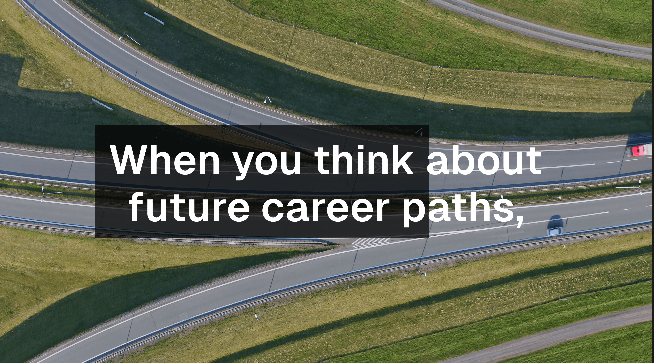
As mentioned earlier, I used 3D effects for the text on drone footage. I wanted it to feel rewarding for viewers to finish that, and I felt some beautiful footage would do the effect. To add some extra flair, I integrated the text into the environment through that. It would take extra work to make it truly 3D and integrate it into the buildings and add accurate shadows which are far beyond the scope of the project. It could always do with some improvement. However, I’m happy that the footage was shot in good lighting so there were a myriad of tracking points for the text to go along with.

O Resumo
O Resumo
Pre-Production
Run through the script to make any rewrites or revisions for any expository pieces
Communicate with department heads that contribute to executing the creative vision
Create and share storyboards for the cinematographer and production designer to create a sense of the desired look
Go through a short list of initial castings (known as “selects”) to ultimately find the best person for each role
For documentaries, this could be actors for re-enactions, or the best contributors for the documentary
As one of the last steps in the pre-production process, the director and producer(s) share the responsibilities of sorting out logistics for shooting and set, such as locations
Production
Blocks the contributor’s positions as they film
Directs the actors’ performances in re-enactions or voiceover
Post Production
Consults with the editors to ensure the creative look is also represented through editing
Produces a director’s cut with the editor
Directors are not the ones who directly produce the final cut; this is down to the film studio(s)
Consulted by sound design after the final edit is locked
Works with composers to keep the sound feel consistent with the visual feel
O Resumo
Pre-Production
Producers create the initial treatment, which is a rough summary of the idea for the production
Some networks may also want to see a completed pilot script or idea
Oversee character development between episodes to ensure the story can carry itself
If not already done, they write a script for a pilot, which builds the foundations of the tone of the documentary
Producers will then create a logline (usually one sentence) inspired by the treatment
They handle the budgeting, through which they allocate the money needed for contributors, equipment, crew, travel, and many more
Production schedules are then put in place, such as filming dates with contributors, pitch dates, and other important milestones within the production process
After this, they proceed to get the funding and finances needed to ensure the production’s success
Pitches are done to investors, production companies, and sometimes even sponsors
This can also determine how the final product is ultimately distributed; whether this be through streaming, TV, or both, or others
Once the money is secured, crews and cast (contributors) are hired or contacted
When all key people are confirmed, dynamic locations are then scouted, and then have the corresponding permits written and approved
Some of these filming locations may be a contributor’s own home or place, so permission from the contributor would also be needed
Production
Producers generally look over production and ensure things go ahead as planned through their pre-production
Any issues that arise on set are sorted through communicating with the director and crew
Other logistics like catering, transport, and other required services for filming, are also managed by producers
Producers will also adapt schedules or filming if plans go astray
Post-Production
While the director would be the main oversight during the editing process, the producers also work closely with them and the editors
The producer(s) essentially act as the “middle man” between the director and the distributor; maintaining the director’s original vision while still meeting any content requirements set by distributors and/or contracts
They also play a part in the sound design department and composers to give the sound as equal an impact as the visuals
Finally, they monitor marketing and distribution departments
This gets the documentary promoted to audiences, and also secures deals with distributors or even film festivals
In some instances, special screenings of the documentary will be arranged
O Resumo
Pre-Production
Set the original foundations of the doc’s visual style with the director
This involves camera techniques, scene compositions, lighting, and more
They go along to location scouts to plan how to configure these setups for on-location shooting
Production
Oversees both camera and lighting to represent these plans
They work with camera operators to execute the desired shots consistently
They work with lighting to execute the desired lighting plans consistently
Curate the required equipment
Work with director (and crew) to keep visuals consistent
Post-Production
Review and curate the footage for all cuts
Give feedback and oversee colour correction so it consistently lines up with their colouring plans
Wrap up with sound design so both the audio and visuals work in harmony
O Resumo
Pre-Production
Communicate with the director and producer to get a scope of the aims of the documentary
Offer input on the doc’s structure after looking up the script
Taking part in meetings to see how the director’s shooting plans and the DOP’s camera techniques can be translated into storytelling
Production
Reviewing dailies to stay up to date on captured footage
Post-Production
Organising raw footage
Develop a timeline of editing plans with the director
Generate rough cuts; experimenting with different versions to maximise the narrative impact
Create more edits to refine editing techniques in liaision with the director
Collaborate with sound design and visual effects to enhance the production quality
Edit the final cut, ensuring that sound, visuals, and graphics, are in order and effective for the vision
Hand off the edit for colour grading and other wrap-up processes, and offer any needed feedback
O Resumo
Pre-Production
Similar to the editor, they collaborate with the director and cinematographer to get a gist of the visual style for the doc
This is when they also figure out shooting plans and camera setups
Help the producer(s) out with selecting camera equipment that meets the production’s needs
Production
Operates the camera during filming, as they execute shots per the director’s instructions and DOP’s guidance
Post-Production
May occasionally offer feedback on shot selection for editing
Maintain consistency between the technical aspects of footage and their edited versions
O Resumo
Pre-Production
Similar to the editor, they collaborate with the director and cinematographer to get a gist of the visual style for the doc
This is when they also figure out shooting plans and camera setups
Help the producer(s) out with selecting camera equipment that meets the production’s needs
Production
Operates the camera during filming, as they execute shots per the director’s instructions and DOP’s guidance
Post-Production
May occasionally offer feedback on shot selection for editing
Maintain consistency between the technical aspects of footage and their edited versions
O Resumo
Pre-Production
Alongside the DOP, they gather information on the visual style through meetings, and thus the lighting requirements of the production, whether this be techniques or equipment
Go along to location scouts to assess the lighting conditions of the location, so they can start figuring out the lighting configurations
Production
Oversee the lighting setup during filming, making sure it’s in line with the DOP’s vision
Work on technicalities with camera operators so settings like exposure are optimised for the corresponding setup
Collaborate on the fly with the DOP to create dynamic lighting setups from their plans
Post-Production
Offer feedback on lighting continuity during the colour correction process, as well as lighting effects working alongside any graphics
O Resumo
My contributions to the pre-production were secondary research and planning for the end of production. I touched upon my inspirations that would lay out how the documentary would be edited. The one mentioned was “Pepsi, Where’s My Jet?”, a Netflix documentary that used sketchbook-style graphics to inform a rather unserious legal rabbithole. As I would be directing the art and general design language of the doc, this would be a good example of the importance of consistency in graphic design. I also helped to write the script for the intro in collaboration with the scriptwriter, as I’m about to discuss.
For production, I had a small voiceover role for the intro, which lasted about a minute. It was recorded with a professional microphone setup, and took about 5-6 takes before eventually nailing a take. I was supervised by our scriptwriter Leorge and sound editor Alex at the time. The scriptwriter ensured that my diction and rate of speech was dynamic and engaging. The sound editor monitored audio levels throughout all the recordings, calling for retakes during slipups and mic peaking, and then splicing the best recordings together for the final narration clip.
My main role for this documentary was the head editor. So, this is where the majority of my involvement for the documentary lies. After production wrapped, my editing would take place both by myself at home and in a dedicated room with all of the other crew. This allowed everyone to see my editing flow live, so they could make comments on edits and preview drafts. I was responsible for creating most cuts, adding stock footage, graphics, & sound effects. I produced all of the drafts for distribution. I used DaVinci Resolve for my main editing, Artlist for stock footage & sound effects, and Canva for graphics.
I was also delegating certain tasks to others and offering feedback. These are the communications that took place.
O Resumo
With existing expertise in editing, I relied on Ethan for building the foundations of the edit, and ensuring that both he and I can do the footage justice. For example, he cut together Chapter 2, where the contributors were introduced. It offered a nice little preview into our host’s personality, with pensive small drama music to tease the upcoming action of the documentary.
Alongside doing other cuts, he also gave feedback and some help on other smaller assets, such as the photo animation of all the potential job roles in the intro.
O Resumo
Gaddu helped me a lot with curating photos. These were essential for the intro, given it was almost entirely represented with pictures. They were able to gather childhood photos from everyone in the crew, so I could focus on the rest of the edit. They placed these photos into Canva, and created collages for them so they wouldn’t just be flat, individual photos. These collages were sorted by age, so you could see a natural progression as we all visually grow up.
They then handed off the Canva project to me, from which I downloaded all the collages as images for me to import into editing software.
O Resumo
Leorge helped out with various tasks during the editing process. As scriptwriter, I would discuss with him how to arrange the scenes within sequence. He’d refer me to the script, and I’d check with him how well these chapters would transition to each other so they maintain the narrative.
One of the key things he helped me out with was composing some original music for the doc. This included the intro and some segments where he is on screen. We would communicate to make sure the music would match the duration of available content, as well as the mood of the subject at hand or the contributor on screen. In the outro, he was also able to transition his outro music into the credits. The transition was so good, in fact, that it was hardly noticeable to people outside our crew.
O Resumo
Taylor Perks gave me some general consultation on the visuals, especially his own scenes. After all, Taylor’s interviews take place across three different cameras, so he helped with getting the colour grading as close to consistent as possible across all of them.
O Resumo
Alex fetched some useful graphical elements for me. One of them was the “creative youth” match cut graphic in the intro. Similar to some other online documentaries, I wanted this effect to show this sense of ‘hyperfixation’ on creative youth being central to the existence of the documentary. Alex retrieved small texts related to youth creativity, and placed them all into Canva with some minor differences. I was then able to import all of these images into DaVinci to match cut to the beat of Leorge’s music. Alex also retrieved photos of famous actors, directors, and films for use as a bookend to Chapter 4.
O Resumo
O Resumo
The main pre-production document was stored in Google Docs, shared across our individual personal Google Drives. Screenshots of any documents would also be in this Google Doc. Individual sections were signposted with a contents sidebar.
O Resumo
On shoot days, micro SD cards were used in the Blackmagic and Sony cameras used.
At the end of each shoot day, all media was plugged into a Mac computer, and then transferred onto the camera department’s SSD. The cameras’ SD cards were then formatted, and the footage was transferred over to my own SSD for editing. Smaller bits of footage, such as those from the drone, were also stored in OneDrive.
O Resumo
As editing was done in DaVinci Resolve, I mirrored my DaVinci bin setup to how I organised things on my SSD. There were folders for footage, audio, assets (graphics and stock), and exports. Sub folders and even sub-sub folders meant the organisation was consistent. This meant it would be easier to just drop into DaVinci without having to worry about any linking issues after deleting from my Chrome downloads. The folder hierarchy looked similar to this:
01 FOOTAGE
CONTRIBUTOR
A CAM
B CAM
B-ROLL
02 AUDIO
01 MUSIC
01 SOUNDTRACK
02 ARTLIST
02 SFX
03 NARRATION
03 ASSETS
Chapter 1
Chapter 2
etc…
EXPORTS
WorkingTitleBeta1
WorkingTitlev1
etc…
O Resumo
While I wasn’t the one who wrote the risk assessments for the documentary, and not having a large part in shooting days, I made an active effort to stay out of the way. I would not touch any equipment without any supervision from the equipment team, and set up any equipment following the instructions of the DoP. With a fair amount of cables set up, I would stand decently far away such that I wouldn’t trip on them. These were about where the contributor would’ve been anyway. Any liquids I had on me, such as my water bottle would remain stood up, locked, on the floor, and far away from any cabling.
When it came to setting up in our dedicated editing room, we wouldn’t force any cables or movements with the TV, so as not to unmount it from its height.
O Resumo
O Resumo
I feel our documentary suits its platform rather well which, in this case, would be Channel 4. As mentioned in earlier sections of this learning journal, the broadcaster has a wide variety of content, both in the subjects of their programmes and the people they represent. This is especially evident in their documentaries, which tend to be orientated towards young adults and cover somewhat niche topics.
To touch upon why it doesn’t reach the full extent, it doesn’t have the exact same professional polish as seen as their shows on TV. They feel a lot more intimate with the contributors AND crew, compared to theirs which are a lot more general and don’t place as much emphasis on individuals unless the documentary is specific about them. There are also occasional inconsistencies in colour grading, which we weren’t able to fix in time for the deadline. Naturally, there would be more time and leniency to fix these issues within Channel 4’s setting.
However, in regards to the content and editing styles, it provides a fresh perspective on our industry with a fresh style. It features a lot of diverse perspectives on different industries, as well as a crew with various specialties which enable all-round quality. This is accommodated well by their ethos, following in the steps of YouTube documentaries. I could see this both bringing us stronger and further from that extent, though this leads to a heightened quality compared to traditional documentaries.
O Resumo
We listed our initial target audience as 14-16 year old British teens. This documentary is the sort of thing we’d hoped to have watched before we ourselves got into the industry, thus we thought this would be the perfect age range for viewership. With a fair amount of stigma and attitudes of academic subjects having the most prestige, it’s not easy vouching for creative subjects. This is contradicted by the large amount of interest in streaming services and creative talent online, with people specialising in traditional media struggling to fill these gaps as they get older.
The only real way to properly convince people to consider these industries is to show the success stories. This is shown through all the contributors that we got on board, and through using our own talents to inform the narrative. We hoped to be proof that being a creative professional wasn’t a case of age, and that you can start even before you finish education.
O Resumo
Our secondary audience would be to adults who have considered creative careers or roles, but have never gone through it with it in a professional context. Another secondary audience would be the parents of the youth who may express an interest in creative roles. Because our documentary is so heavily oriented around our own experiences, it makes the story feel more relatable and non-hypocritical towards the audience.
It could be said that parents would be more hesitant for their child to get into the creative industries than the child themselves. So, essentially practicing what we preach would be key in ensuring that they would be engaged too. This is a philosophy we hoped would extend to an adult audience. There would have to be a sense of maturity to present our work as a viable professional option, and I feel we were able to do just that with our collective experiences and edited accordingly to show that.
O Resumo
O Resumo
We were able to convey achieve good communication technique through our professional equipment and the respective technical talent that goes along with it. Our DoP, gaffer and camera operators were all knowledgeable on camera and lighting setups. This meant that every segment filmed, whether it be a static interview shot or a dynamic drone shot, looked professional and would essentially be indistinguishable from the execution of all of this by an adult crew.
Ditto with the audio. As we had an onboard composer, as well as experience with finding stock music for other professional, we were able to carry this consideration of production quality over to the audio department too. The music was what carried the mood and atmosphere of the respective scene. After all, the visuals and audio work in harmony, and neither is necessarily more important than others.
O Resumo
What set our documentary further apart from others within our genre is that the narrative is formed by online, specifically YouTube and Netflix, entertainment. There’s a larger focus on creating good graphics and design. Whether it be for the intro, or for the credits, these give an additional visual to keep the audience engaged, which is further enhanced when used in tandem with sound effects.
Other documentaries also tend to be a lot longer, even reaching 40 minutes to an hour. Our editing is optimised, meaning we didn’t want to make it longer than it had to be, and hammering in the same message in different ways. Like small YouTube documentaries, this piece acts as a small piece of wisdom to carry around with you. It’s the initial spark to get people curious, and then thinking it through in their own time would then help them to inform that decision by themselves.
O Resumo
O Resumo
In accordance with our pre-production, I feel we just about exceeded those expectations! We were able to cover all the scenes we needed, and film with all contributors that we had planned, and then some. There are some cases where we may have gone off-script or taken the narrative in a slightly different direction, however this would hardly be noticed by the average viewer.
O Resumo
I feel that we have a solid foundation for a full-blown documentary on this topic on Channel 4. This could be built upon further by interviewing creative adults, finessing the graphics, music & colour grading, and expanding outside our school for contributors.
O Resumo
We initially had a larger scope for our credits scene. We had hoped to include some behind-the-scenes, as well as various skits or references to our past work. This would’ve been filmed similar to a music video, with the outro music playing simultaneously. Time constraints meant we unfortunately would not be able to get this done on time. We had also originally planned to edit a tour of our makeup contributor’s role, however was also unable to get this done due to time constraints.
O Resumo
There are many codes and conventions that our documentary was able to meet. The following is a summary of them.
Authenticity
We did our interviews with real young creative professionals, as well as this product being made entirely by creative professionals
Voiceover Narration
While not consistent throughout the entire documentary, my voiceover narration was featured for the first minute or so
Interviews
Interviews were conducted with five contributors, all who were working in a professional capacity with professional clients within various different yet somewhat linked creative industries
Archival Footage
Photos and videos of us growing up throughout our childhoods was featured in the intro
Observational style
B-roll laid over the interviews featured the camera operators just following the contributor and their usual activities
Expository style
All of the above elements were planned and combined to maintain a structured story with the intent to inform
Participatory elements
Two of our crew were featured on-camera; our 1st AD & scriptwriter as host, and one of our camera operators as a contributor, both offering their own experiences and/or aiming to see things from the audience’s perspective
Music and Sound Design
Both custom and licensed music were used to set the various tones within the doc; whether a moment of thought was called for, or whether a rewarding finish to the doc was needed
Visual aesthetics
The show’s design language, through graphics and animations, was considered using elements sourced from various online design hotspots and then formed into cohesive branding
B-roll and any photos provided by contributors would further inform the topic they were discussing at the time
Credits and Sources
All contributors and crew were credited
Our sources for stock footage, and all music (licensed, stock, etc.) are all listed
Credits were given to our main filming location at a school

